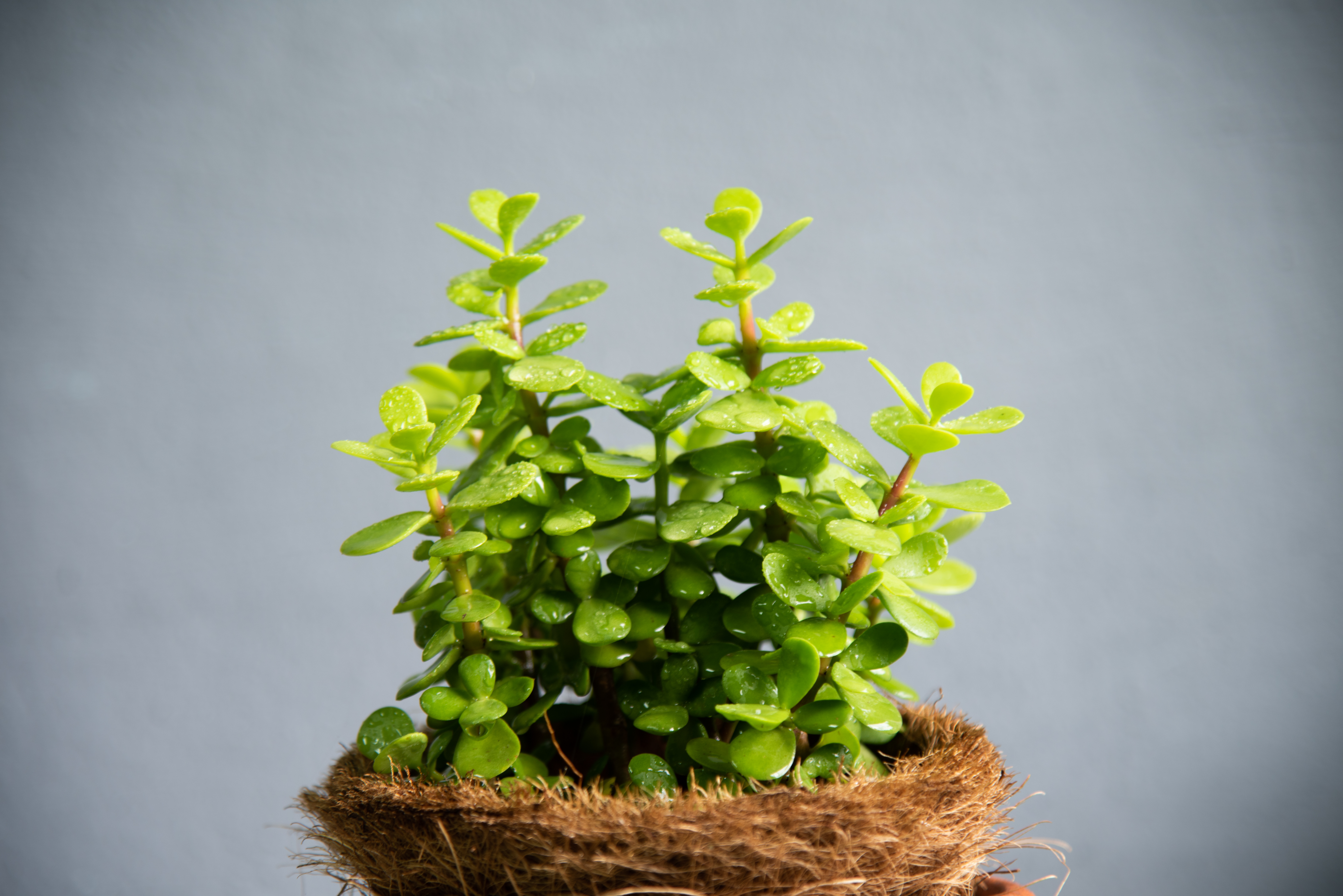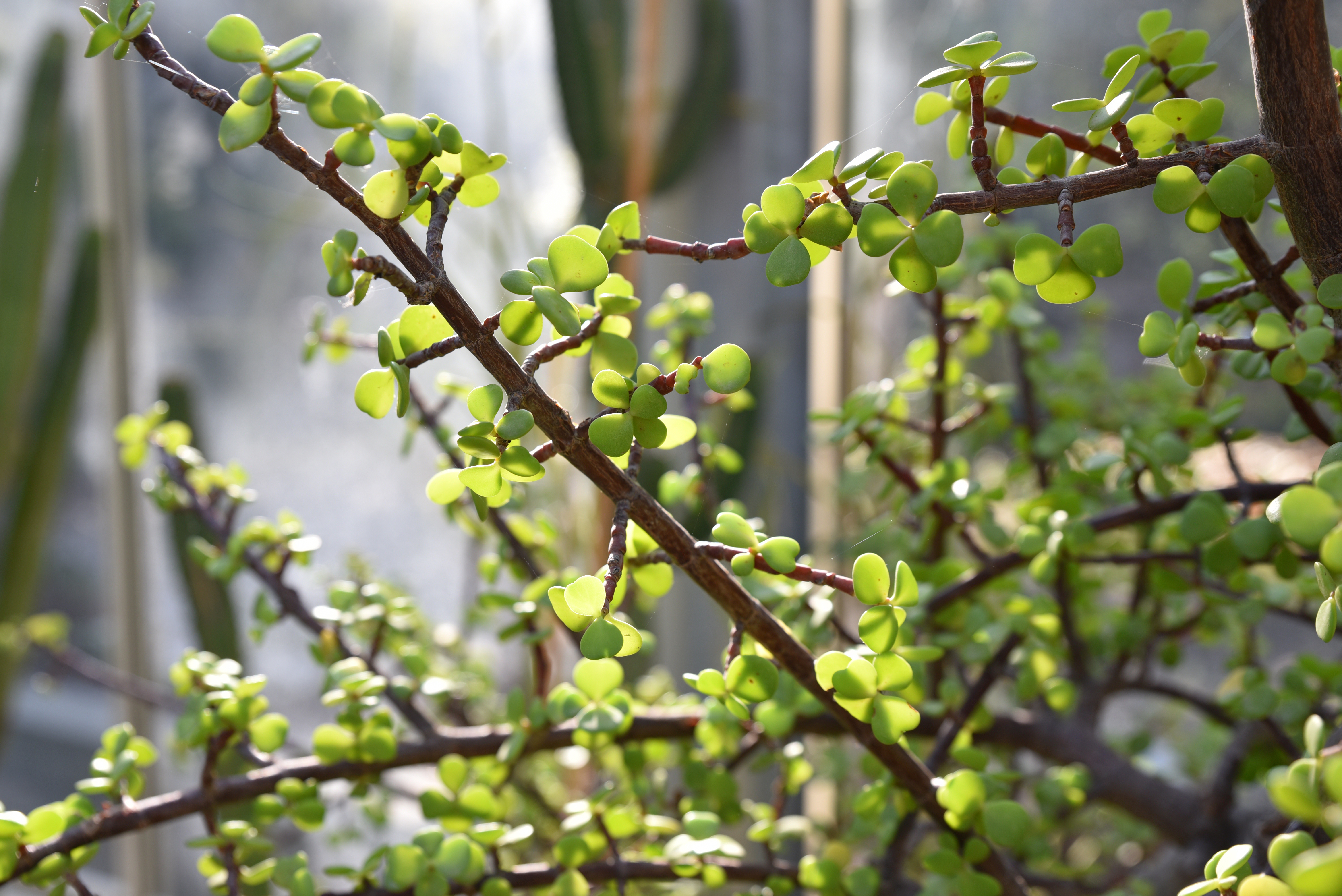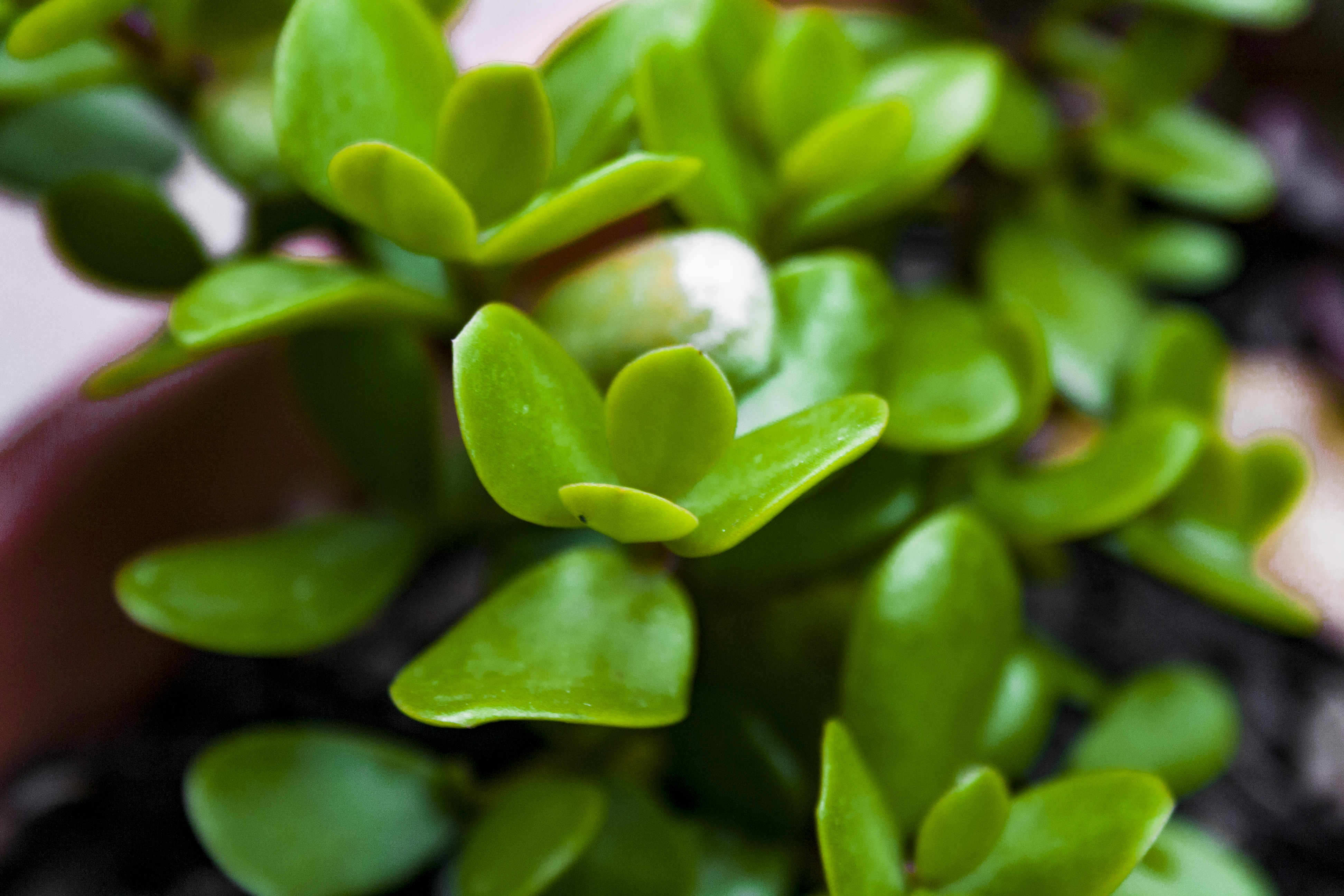Origin
The Elephant Bush (Portulacaria afra), or spekboom in Afrikaans, is a type of succulent native to South Africa.
They're often misidentified as a Crassula ovata (Jade Plant) as they are similar in appearance, but these plants are actually not related - they come from different Families. The Elephant Bush belongs to the Didiereaceae family, whereas Jade Plants are from the Crassulaceae family. These plants are sometimes also referred to as 'Elephant's Food' as, funnily enough, elephants like to eat them! (Although rhinos are also said to like eating them too).
They can grow impressively huge in the wild: up to 20 ft or 6 m tall. However, when grown indoors as a houseplant, you don't need to worry about it quickly dwarfing your home - they won't grow this tall in an indoor environment.

Care
In the wild, these plants grow along slopes and rocky outcrops and are well-used to dry conditions. They can also grow together to form dense thickets. This density can help protect it from frosts and fires, meaning that, for a succulent, they're surprisingly tolerant of colder temperatures (although we still recommend bringing yours indoors for the winter).
Starting to get leggy? Stretching towards the light? Make sure that it's getting enough light and move it if needed.
They can also do quite well even in harsh sunlight, making them a hardy and adaptable plant.
However, as they are naturally drought-resistant, it is important that you don't overwater your Elephant Bush. Too much water can quickly lead to leaf shedding, and can cause them to become overly soft and delicate. If you think you might have overwatered your plant, hold off on adding more water for a while and move your Elephant Bush to a location where it can more quickly dry out, such as a brightly lit warm area in your home.

Other
If you plant your Elephant Bush in a hanging basket, its leaves will begin to grow out in a trailing fashion, making them a beautiful display piece. Whereas if you keep it planted in a pot, it can look more like its namesake bush or even a bit like a bonsai when pruned correctly.
Unlike Jade Plants, which are toxic, the Elephant Bush is actually edible and is used in parts of South Africa to add flavor to soups and salads. Here, they're also often fed to livestock animals such as goats and cattle.
Additionally, they have traditional medicinal uses.
